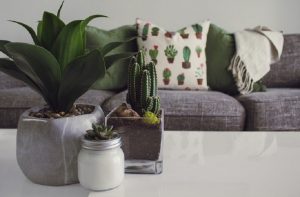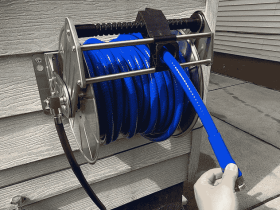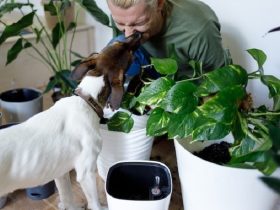Having plants in your home doesn’t just beautify your home. There are so many benefits houseplants can offer you.
Some of these benefits are even health-related. For instance, they can help reduce your stress levels, they can also be very therapeutic and can help people with anxiety. You can read this article to learn more about the health benefits of plants.
It is, therefore, not surprising that more people are now interested in getting houseplants. However, if the right practices aren’t followed while caring for these plants, they may end up withering and dying.
Repotting is one important practice that every houseplant owner should be well informed about. This is because this process is very important when it comes to a plant’s sustenance and growth.
Typically, this process is needed when the plant outgrows its current planter or when the potting mix no longer has enough nutrients to support growth.
However, sometimes, when a new plant is bought, the owner can decide to repot it after a while to ensure optimal performance. As someone new to repotting, you may make some mistakes that will cost your plant its life. Even people with enough potting experience can make some of these costly mistakes.
This is why you need to know some of the common repotting mistakes people make. So that you can avoid them when you are repotting your new and even old plants.

Common Repotting Mistakes People Make
Below are some of the most common repotting mistakes people:
1. Using Oversized Pots
Some persons have this idea that when their plants are in a way bigger planter, they will grow a lot way faster. We can’t even begin to tell you how wrong this idea is.
When you use a planter that is disproportionally oversized than your plant, you won’t be hastening its growth. On the contrary, an oversized planter will only make the soil dry out slowly, this will, in turn, make the roots susceptible to rot.
Rather than using a big pot, just use a new planter with a diameter a few inches bigger than that of the current planter.
2. Repotting During Cold/Harsh Weather
Ever heard of “transplant shock”? Well, your plant could suffer from this (could even die from it) when you transplant or uproot it in harsh or cold weather. Therefore, summer is the ideal time to repot plants especially when you reside in a very cold area.
We know you want to move your new baby to a more conducive planter, but if the weather is too cold, do not risk it. A little wait won’t wreck any damage.
But, if your climate is warm, you can choose to repot your plant at any time you like.
3. Repotting Once The Plant Arrives
A very classic error most first-timers make is repotting their plants once they get their hands on them. They do this because they think the soil the plant comes with isn’t good enough, so they need to replace it ASAP.
However, reliable online stores often use only high-quality soil for their plants. You can click here to go on Planted Pot and find out more about reliable online plants stores.
If you shop from a reliable store, the soil’s quality should be the least of your concern. This means you do not need to rush and replace the soil. Instead, let your new baby adjust to its new environment, humidity, temperature, and lighting.
Once it has fully adjusted, then you can go ahead to take it to its new home.
4. Not Loosening the Roots
Another mistake people make when transferring a plant to a new planter is taking the plant complete with its root ball to the new planter.
When you remove the old planter, the plant’s root most likely would have gathered some dirt and formed this into a ball. You need to loosen the accumulated dirt off the roots. If you transfer the plant with the ball fully intact, new roots may not be able to branch out and this can affect the plant’s overall growth.
5. Insufficient Water
When a plant is repotted, the soil in its new home is more and probably still dry. Hence, after this process, you need to water the soil with more water than you normally use for the plant.
Some people fail to do this and end up wondering why their plant hasn’t been doing well since they moved it to a new planter.
6. Putting Rocks and Gravels at the Bottom of the Pot instead of Using Planters with Drainage Holes
Another misconception people have about caring for plants is that adding rocks and gravels is wonderful for their plants. However, doing this often results in raising the wet area of the soil, making it closer to your plant’s roots.
When this happens, the roots won’t have enough oxygen and this may cause them to rot. Therefore, it’s better to get a planter with drainage holes rather than adding rocks and gravel to make up for the lack of holes.
Even if the planter you have does not have drainage holes, you can drill some by yourself. Visit https://homeguides.sfgate.com/ to learn how to do this.
Bonus: Do not place the plant under direct sunlight after this process. Instead, place it in an area where the light is filtered for a few weeks.
Conclusion
Repotting your new plant after a while could be good for its overall growth. But, if this isn’t done properly, it may end up as a disaster. Apart from knowing how to properly carry out this process, avoiding the common mistakes discussed in this article is also important.











Leave a Review